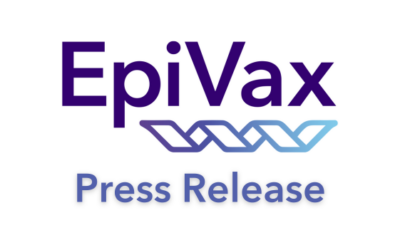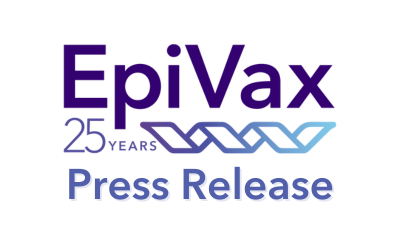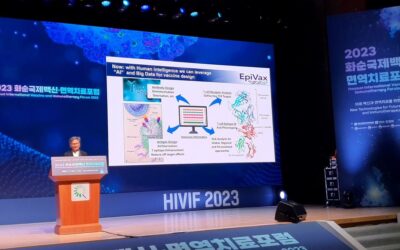News
Join our newsletter
Stay up to date with EpiVax and greater industry news, events, and technological advancements with this monthly update written by EpiVax co-founder and CMO, Dr. Annie De Groot.
EpiVax Appoints Dr. Vibha Jawa to Lead Scientific Strategy as CSO
EpiVax Appoints Dr. Vibha Jawa to Lead...
The Role of Treg Epitopes (Tregitopes) in Antibody Maturation Uncovered in New EpiVax Study: Implications for Therapeutic Antibodies
The Role of Treg Epitopes (Tregitopes) in...
EpiVax Strengthens Technology Leadership Amid Immunoinformatics Advancements
EpiVax Strengthens Technology Leadership Amid...
EpiVax Drives Immunogenicity Innovation in 2024: Year in Review
PROVIDENCE, R.I., Dec. 6, 2024...
Supporting Health Equity: EpiVax Highlights Partnerships and New Research from Clínica Esperanza and GAIA Vaccine Foundation
PROVIDENCE, R.I., Dec. 6, 2024...
EpiVax and CUBRC Awarded FDA Contract Worth $2M for Development of Control Peptides for Immunogenicity Risk Assessment Assays Supporting Regulatory Filings of Generic Peptide Drugs
PROVIDENCE, R.I., Oct. 24,...
The Amsterdam Immunogenicity and Tolerance Seminar: 2024
The 10th annual Amsterdam Immunogenicity and...
Novel Immunogenicity Risk Assessment Platform, ISPRI, Facilitates Biologic Therapeutics Development
PROVIDENCE, RI, April 1, 2024 /PRNewswire/ --...
EpiVax Posters at AAPS NBC 2024
If you missed the posters that we presented at AAPS NBC 2024, don’t worry!
Eisai Licenses ISPRI Toolkit
Eisai Licenses EpiVax's ISPRI Toolkit for...
EpiVax CEO Speaks at the Hwasun International Vaccine and Immunotherapy Forum
EpiVax CEO Annie De Groot was one of three...
Streamlining Generic Drug Immunogenicity Evaluation: EpiVax’s “PANDA” Approach
PROVIDENCE, RI, August 10, 2023 /PRNewswire/ --...




